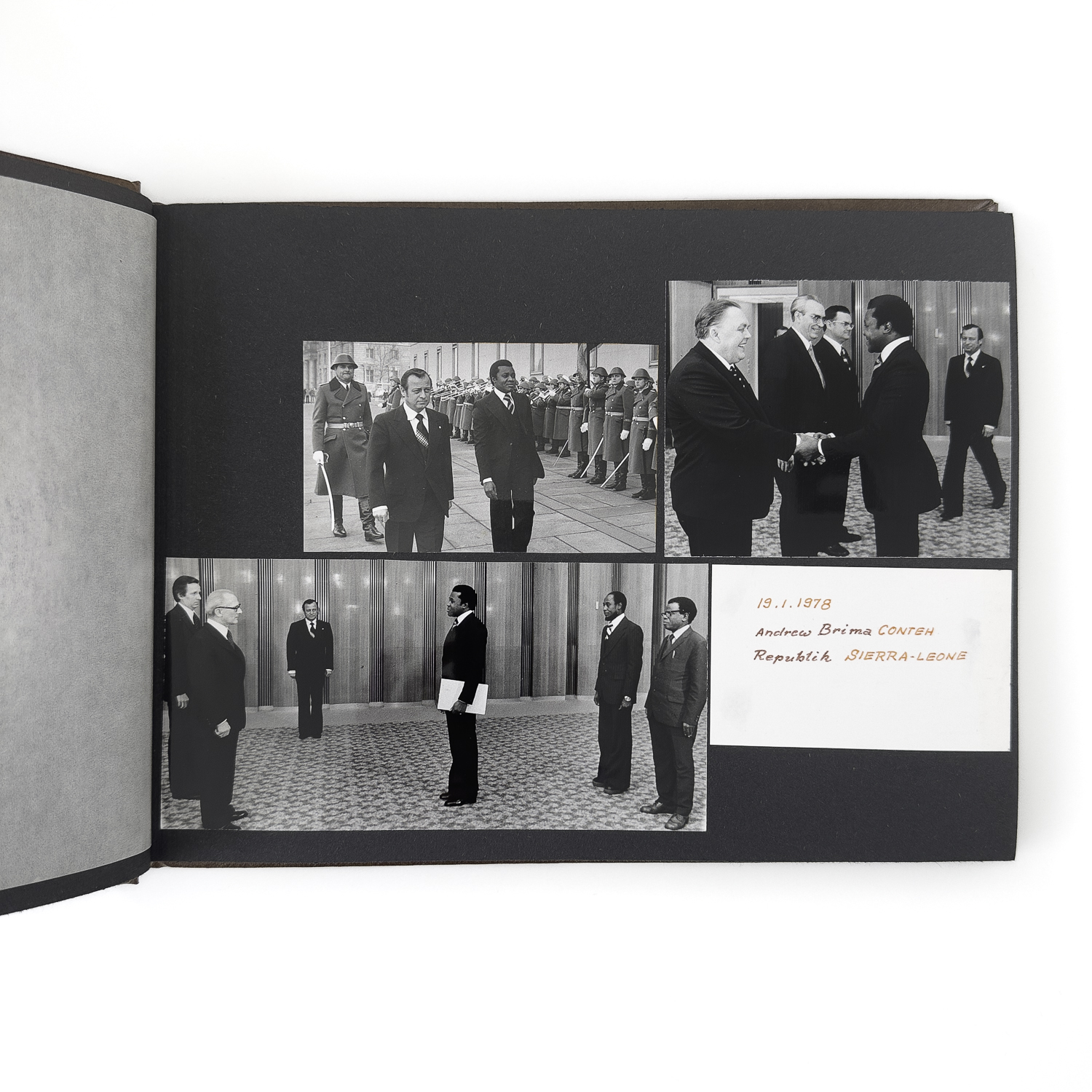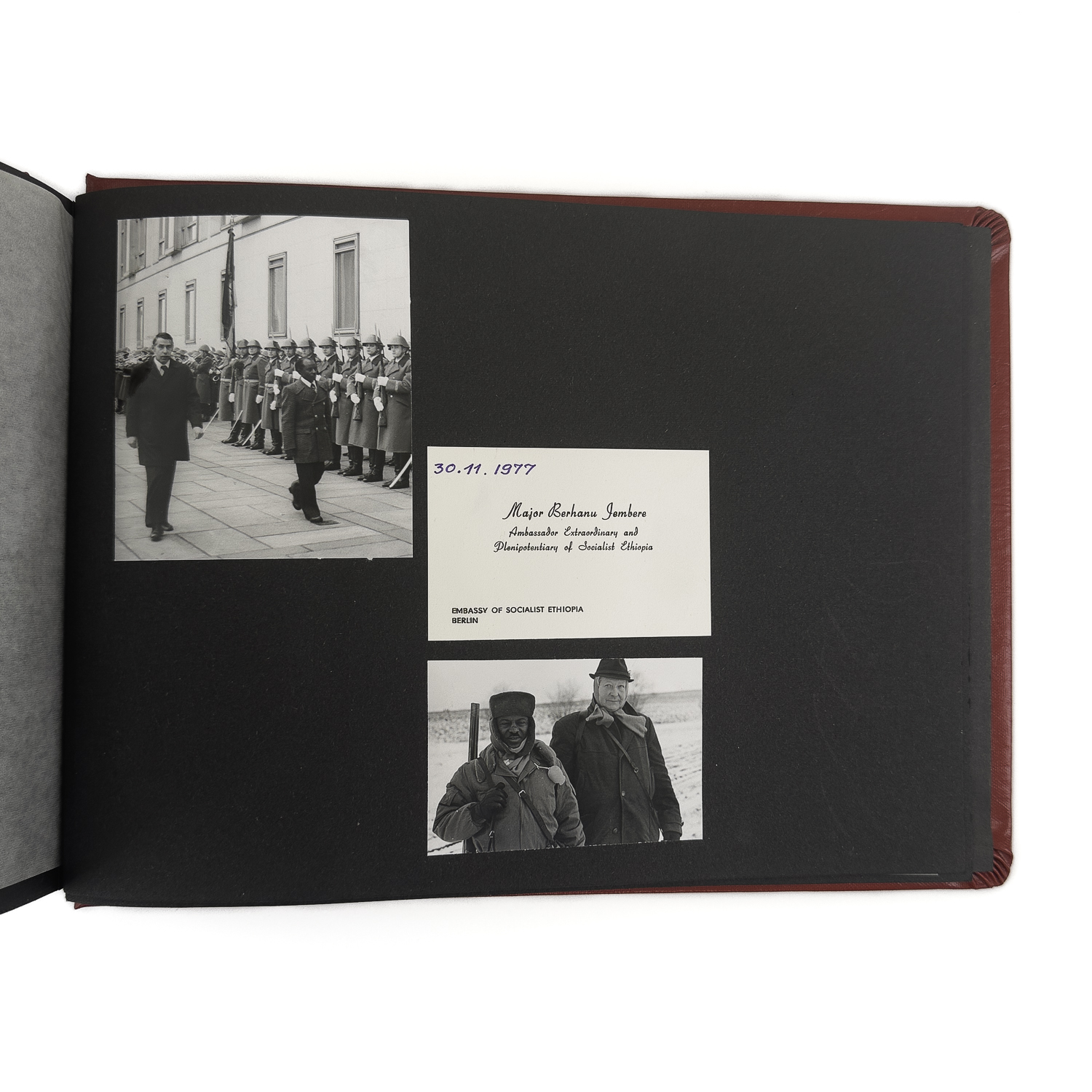J27. Albums from East Germany’s Diplomatic Corp
These four photo albums document diplomatic visits to East Germany from around the world in the years 1973-1981. Generally with the official photograph of the “receiving ceremony”, and then additional photographs at dinner or at the most beloved of East Germany activities: hunting. Hunting in East Germany can only be compared to golf in the United States. It’s where business was done. To succeed in East Germany, you partook in hunting. See the 2018 book by Helmut Suter, Honeckers letzter Hirsch: Jagd und Macht in der DDR [Honecker’s Last Buck: Hunting & Power in the GDR].
The albums cover an enormously broad spectrum of countries. From Bangladesh to Sri-Lanka; from Somalia to the United States and Great Britain; Irak, Cuba and Finnland and every other imaginable country. Some of the scenes are quite humorous. For example, the ambassador of Lebanon appears to be receiving instructions on how to operate a shotgun (for hunting); Ethiopia’s ambassador appears to be freezing while hunting. In contrast the ambassador from Rumania is clearly very much at ease posing in the snow with his shotgun.
For the United States, we have a nice set of photographs with ambassador David B. Bolen dated August 20, 1980. For Canada, there are a nice set of photographs with M. Morten Maddik dated October 20, 1978.
Many of the photographs include Erich Honecker (1912-1994), the leader of East Germany. From two letters included with the albums, we believe that these albums belonged to Franz Jahnowski, the director of the protocol department at the Ministry of Foreign Affairs (nicknamed, “Honecker’s Master of Ceremonies”).
The history of diplomatic relations with East Germany is a complex one. At first, it was not clear whether countries should mantain any kind of relationship with the communist country. These albums document a great achievement for East Germany: the status of a recognized country with diplomats around the world visiting and partaking in ceremonies and bonding while eating, drinking, and (of course) hunting. The albums represent an important part of East Germany’s history and are valuable for those interested in the study of international relations with communist countries.
Albums acquired through public auction in Germany.













